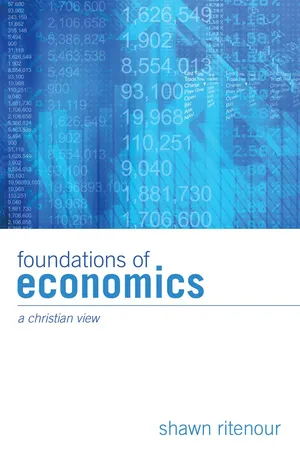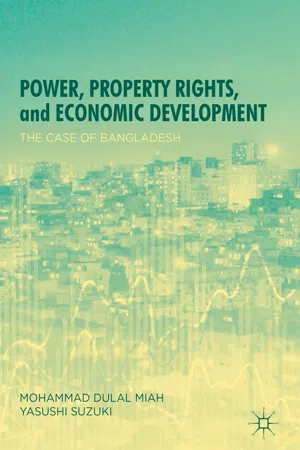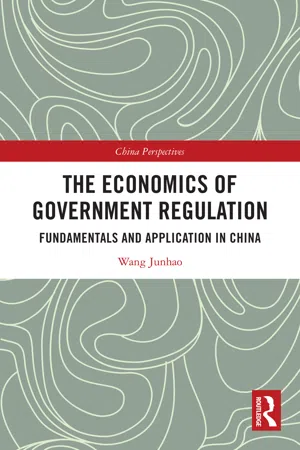Economics
Price Control on Market Structure
Price control refers to government regulations that set maximum or minimum prices for goods and services in the market. These controls can impact the market structure by influencing the behavior of firms, competition levels, and market efficiency. For example, price ceilings can lead to shortages and reduce incentives for firms to produce, while price floors can create surpluses and distort market equilibrium.
Written by Perlego with AI-assistance
Related key terms
4 Key excerpts on "Price Control on Market Structure"
- eBook - ePub
Foundations of Economics
A Christian View
- Ritenour(Author)
- 2010(Publication Date)
- Wipf and Stock(Publisher)
15 Price Controls I n the previous two chapters we introduced detailed analysis of one facet of government intervention in the economy. We analyzed the nature and consequences of interventionist macroeconomic policy and discovered that neither monetary inflation nor government spending are efficient ways to expand an economy. Macroeconomic policy, however, is only one category of state intervention in the economy. Another common form of intervention is price controls. Price controls are the result of laws regulating prices at which people can legally buy and sell. Rarely do governments force buyers and sellers to accept a single price to make an exchange. Instead governments prefer to set maximum and minimum prices. Price Ceilings The form of price control governments often use in an attempt to thwart the negative consequences of monetary inflation is the price ceiling. As the name implies, a price ceiling is a maximum legal price. If you attempt to throw this textbook up into the air as far as it will go, what will stop it? What is the barrier above which it cannot fly? The ceiling. Just as the ceiling in an indoor room is the highest a thrown object can travel, a price ceiling is the highest price that buyers can legally pay and that sellers can legally accept. There are two types of price ceilings: effective and ineffective. We will initially investigate the consequences of an effective price ceiling, but first need to understand what we mean by the words effective and ineffective. Typically, those words are taken to mean that something either works well or does not. In our case, however, the terms refer to whether the price ceiling has an effect on the actual price that buyers pay and sellers receive in an exchange. An effective price ceiling hampers voluntary exchange from negotiating a market price - eBook - ePub
Power, Property Rights, and Economic Development
The Case of Bangladesh
- Mohammad Dulal Miah, Yasushi Suzuki(Authors)
- 2018(Publication Date)
- Palgrave Macmillan(Publisher)
© The Author(s) 2018Begin AbstractPower, Property Rights, and Economic Development https://doi.org/10.1007/978-981-13-2763-6_7Mohammad Dulal Miah andYasushi Suzuki7. Property Rights and Price Control
End AbstractMohammad Dulal Miah1andYasushi Suzuki2(1) University of Nizwa, Birkat Al Mawz, Oman(2) Ritsumeikan Asia Pacific University, Beppu, JapanMohammad Dulal Miah (Corresponding author)Yasushi Suzuki7.1 Introduction
The economic rationale of many government regulations can be derived by applying the property rights framework. Price control is one of such legislative actions that can be analyzed from a property rights perspective. Price control imposes restrictions on private contracting by fixing the price of economic resources for which market price is available. If the control price remains below the market clearing rate, the unassigned portion of the economic value (the difference between the market price and the control price) is left to the public domain . People spend resources to capture a portion of that unassigned value. Spending economic resources for already produced goods is equivalent to social waste. In contrast, government may set up prices for some goods or services which are more than the market clearing price. The difference between the market price and the fixed price in this particular regard is equivalent to tax , which increases the marginal cost to the producer, providing an ill incentive to reduce the production, possibly causing deadweight welfare loss.The call for price ceiling or price fixing for consumption goods is generally motivated by a belief that such ceiling makes consumers better off. For instance, it is argued that putting a cap on the price of competitive goods can ensure that the goods remain affordable to most citizens. Evans (1982 ) relates the logic of price control to inflation and argues that the general price control would be a great idea if inflation imposes social costs in the form of more expense in calculating and posting prices, social unrest, and uncertainty - eBook - ePub
The Economics of Government Regulation
Fundamentals and Application in China
- Wang Junhao(Author)
- 2021(Publication Date)
- Routledge(Publisher)
Most natural monopolies provide relevant products or services for different customer groups. In the production and supply of products and services, a large proportion of a firm’s costs are common costs. These may be the operating costs associated with the power plants and transmission lines of the electric power industry, the telephone exchanges and telecommunications networks of the telecommunications industry, and the production equipment and pipelines of the gas and water industries, as they provide products or services for different types of customers. As the various demands of different customers likely result in cost differences, regulated prices based on demand and costs should reflect such differences. As such, the fundamental task of price structure regulation is to ensure the reasonable allocation of a firm’s common costs across various products and services, to be borne by different customer types.Demand and price structure
We can break down the total demand of a natural monopoly according to different standards to form different demand structures. For example, in China’s water and gas industries, the customers are generally categorized into residents, product manufacturers, service providers, and administrative institutions. In the electric power industry, consumers can be categorized based on peak and off-peak demand by season, month, week, date, or even time zone. In addition, demand can be divided according to user equipment. For example, demand can be broken down into gas for cooking, for hot water supply, and for heating in the gas industry, or categorized according to the size of the electricity meter, gas meter, or water meter. In a natural monopoly, demand can be divided into high, medium, and low demand based on consumption level.Thus, from a practical standpoint of price regulation, the demand structure should be considered in terms of its effect on regulated prices, so as to form a supportable price structure. For example, the government often sets a lower regulated price for residents and a higher one for product manufacturers and especially a service provider, due to the expected nonprofit nature of certain natural monopolies. Likewise, it is necessary to set a higher regulated price for peak demand and a lower one for off-peak demand in a bid to mitigate the difference between demand peaks and valleys, maximize investment returns, and make full use of the existing production and supply equipment. In another example, a product or service could be supplied at a lower price to a large consumer and at a higher price to a small consumer, as consumption has an inverse relationship with production and supply cost. - eBook - ePub
- Neva Goodwin, Jonathan M. Harris, Julie A. Nelson, Pratistha Joshi Rajkarnikar, Brian Roach, Mariano Torras(Authors)
- 2022(Publication Date)
- Routledge(Publisher)
But in other cases, especially where the elasticity of supply is high, price controls can be disastrous. One example is in Zimbabwe, where extensive price controls were imposed in 2007 with the goal of keeping prices for food and other essential goods low. As our example leads us to expect, the result of enforced low prices was to destroy the incentive for farmers and other suppliers to produce, leading to severe shortages. So, the poor people whom the policy was supposed to help were instead hurt by the unavailability of food and other basic goods. Meanwhile, farmers and other merchants were forced into bankruptcy. The price controls had to be abandoned after they forced the economy into virtual collapse.4.3 Price Floors
Governments also sometimes intervene in markets with the opposite goal—to keep prices from falling to the market equilibrium. A price set above the market price is called a price floor or “price support” (because it establishes a minimum allowable price).price floor: a regulation that specifies a minimum price for a particular productWhy would governments want to keep prices at higher levels? The obvious reason is to aid producers. Governments commonly specify minimum prices for agricultural products such as grain or milk. The goal is to help farmers, who often have considerable political influence. Of course, this also pushes up prices to consumers.The economic effect is the opposite of a price ceiling. Rather than creating a shortage, price floors tend to create a surplus, as producers increase their output to take advantage of profitable higher prices. But these higher prices cause consumers to cut back their purchases. In some cases, the government will buy up the surplus created by the price floor. From an economic point of view, this is clearly inefficient, because it encourages excess production and involves both higher prices to consumers and large government expenditures. Generally, economists would recommend a more efficient approach of giving direct aid to farmers, if this were considered necessary, but leaving market prices alone.Another classic example of a price floor is the minimum wage. Most governments have minimum wage laws specifying that hourly wages must be at least a given level. The United States has a federal minimum wage of $7.25 per hour (as of 2022), although about 30 states have set higher minimum wage rates. Most other developed countries have higher minimum wage rates. For example, the minimum wage is equivalent to about $10 per hour in Canada, about $11 per hour in France, and $15 per hour in Australia.6
Index pages curate the most relevant extracts from our library of academic textbooks. They’ve been created using an in-house natural language model (NLM), each adding context and meaning to key research topics.



